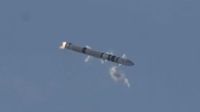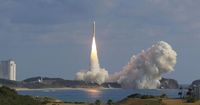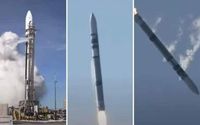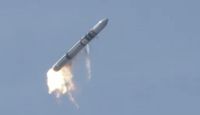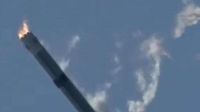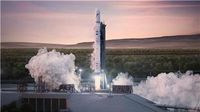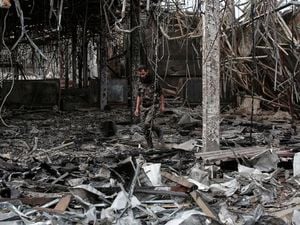On March 30, 2025, a significant milestone in European space exploration was marked by the first orbital launch attempt from continental Europe, which unfortunately ended in failure. The Spectrum rocket, developed by the German startup Isar Aerospace, took off from the Andøya space base in northern Norway at 12:30 PM, but crashed just seconds after liftoff, generating a powerful explosion.
The Spectrum is a two-stage rocket measuring 28 meters in height and 2 meters in diameter, designed to carry payloads of up to 1,000 kg into low Earth orbit (LEO) or 700 kg into a heliosynchronous orbit (SSO). This launch was particularly notable as it was the northernmost ever conducted from continental Europe, surpassing previous launches from the Plesetsk military cosmodrome in Russia.
According to live footage streamed on YouTube, the rocket began to oscillate shortly after takeoff, flipped over, and fell back to the ground, resulting in a dramatic explosion. Fortunately, the launch pad remained intact, and no human or material damage was reported.
Despite the failure, Isar Aerospace had tempered expectations prior to the launch. Daniel Metzler, the company’s co-founder and CEO, stated, “We had little hope of reaching orbit on the first attempt.” However, he also expressed satisfaction with the flight's overall performance, noting that the test flight met all expectations, including a successful takeoff and validation of the flight abort system.
“In my opinion, it was a great success because nothing exploded on the launch pad,” commented Professor Kjellmar Oksavik from the University of Bergen, reflecting a more optimistic viewpoint on the test flight's outcomes.
The Spectrum rocket is part of a broader effort by Isar Aerospace to establish a reliable and independent access to space for Europe. Established in 2018, Isar Aerospace is one of several startups contributing to what is often referred to as the new European space economy, alongside companies like Rocket Factory Augsburg and PLD Space.
The company has already begun production of Spectrum rockets and plans to make necessary modifications based on the data gathered from this first flight. The goal is to return to the launch pad as soon as possible for another attempt, with aspirations to reach the category of launchers capable of delivering payloads of up to one ton.
Robert Habeck, Germany’s Minister for Economic Affairs and Climate Action, emphasized the importance of this initiative, stating that Isar Aerospace will play a vital role in ensuring Europe’s independent access to space. The launch also comes in the wake of previous failures in the European space sector, including Virgin Orbit's unsuccessful orbital flight attempt from the UK in 2023.
Isar Aerospace's Spectrum is built primarily from carbon composite materials, with high-performance metal components produced using 3D printing technology. Although not currently a reusable launcher, the company hopes that advancements in technology and automation will help reduce costs and increase launch frequency in the future.
The Andøya space center, where the launch took place, has been operational since 1962 and is primarily owned by the Norwegian Ministry of Trade and Industry. It has hosted approximately 1,200 suborbital rocket launches since its inception.
As the dust settles on this ambitious launch attempt, the European space community remains hopeful. The Spectrum rocket, with its innovative design and advanced technology, represents a step toward a more competitive and independent European space industry.
While the immediate outcome was disappointing, the lessons learned will undoubtedly inform future launches. The journey to successful orbital access is often fraught with challenges, but with determination and innovation, Isar Aerospace is poised to make significant contributions to the future of space exploration.
